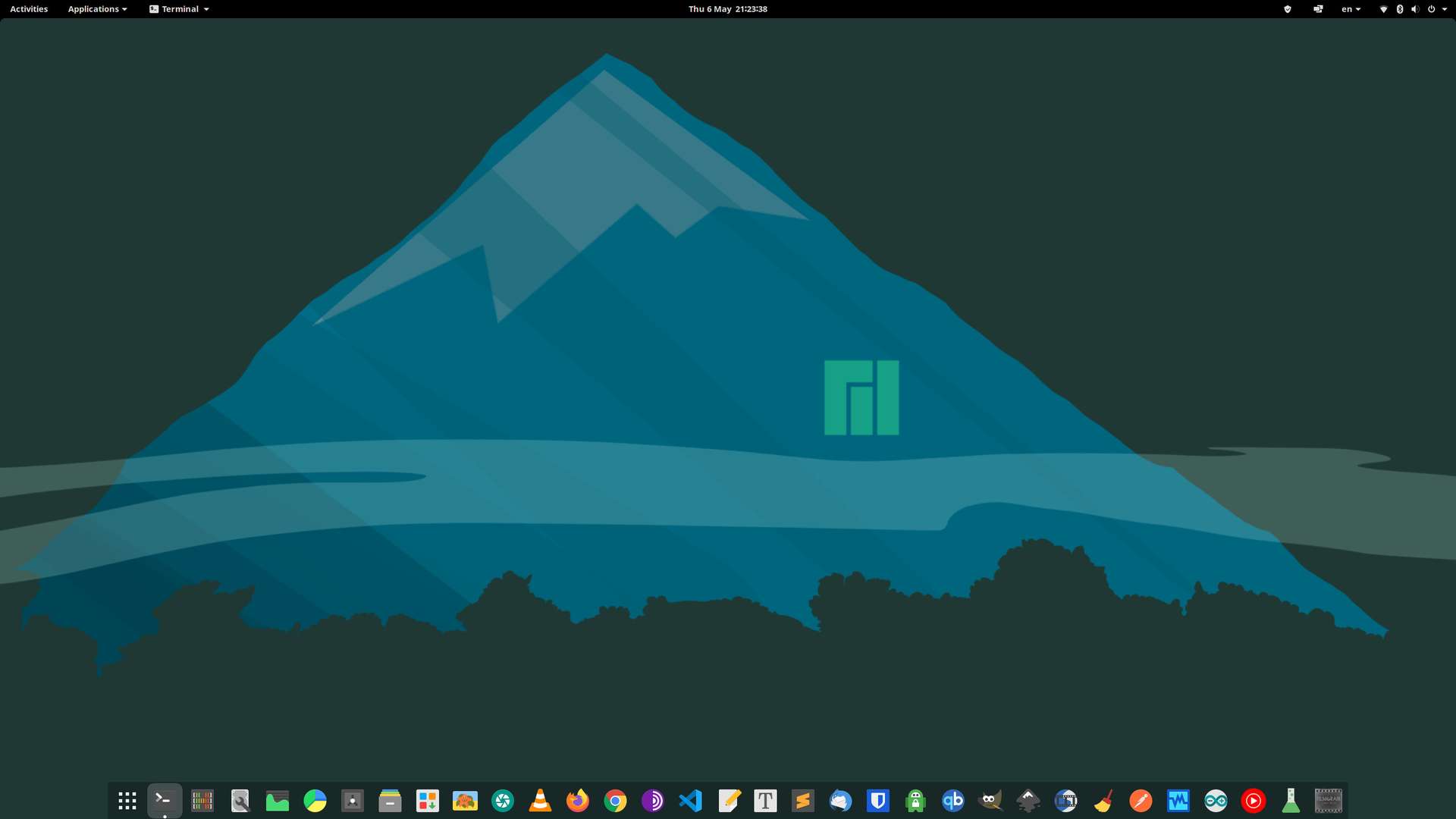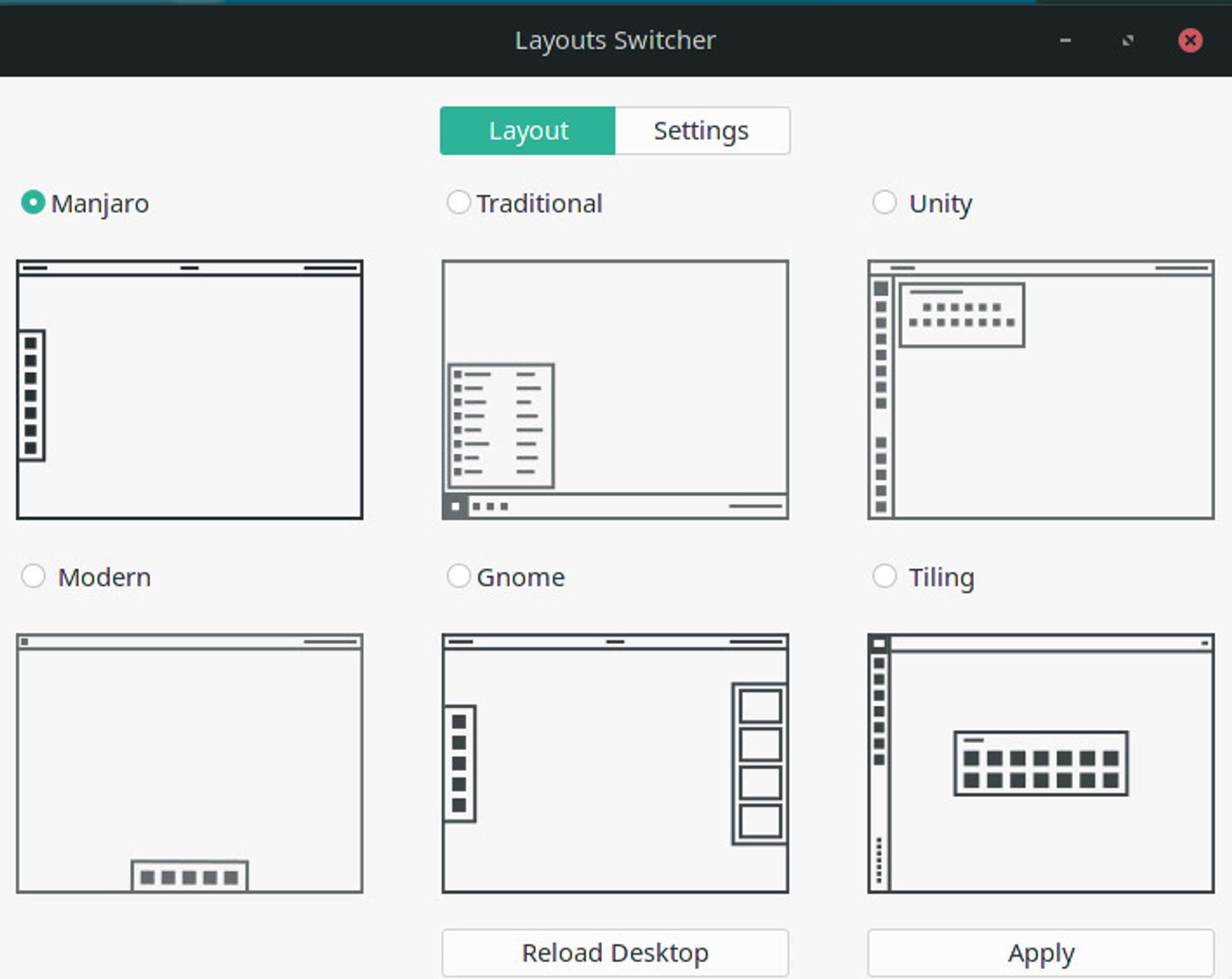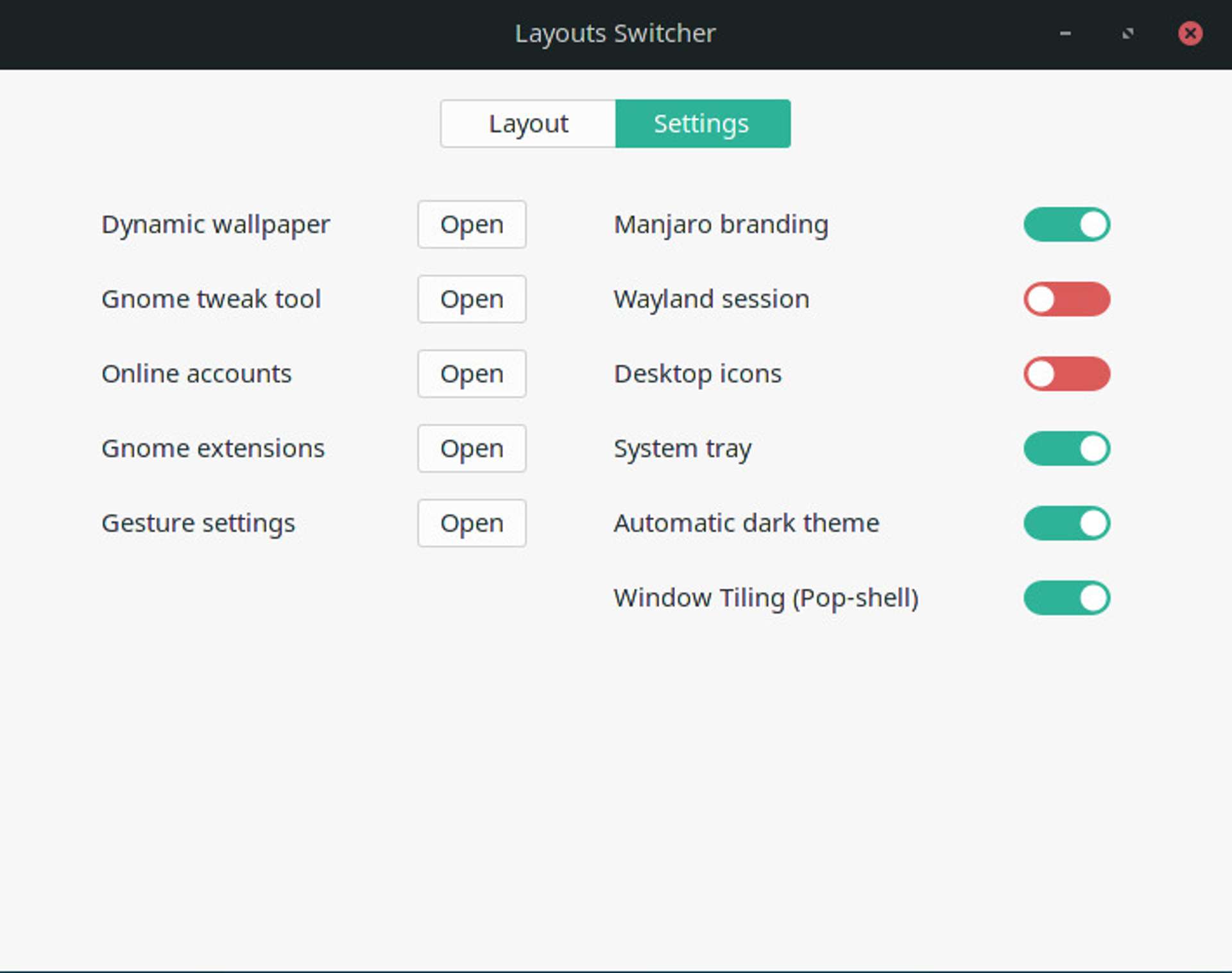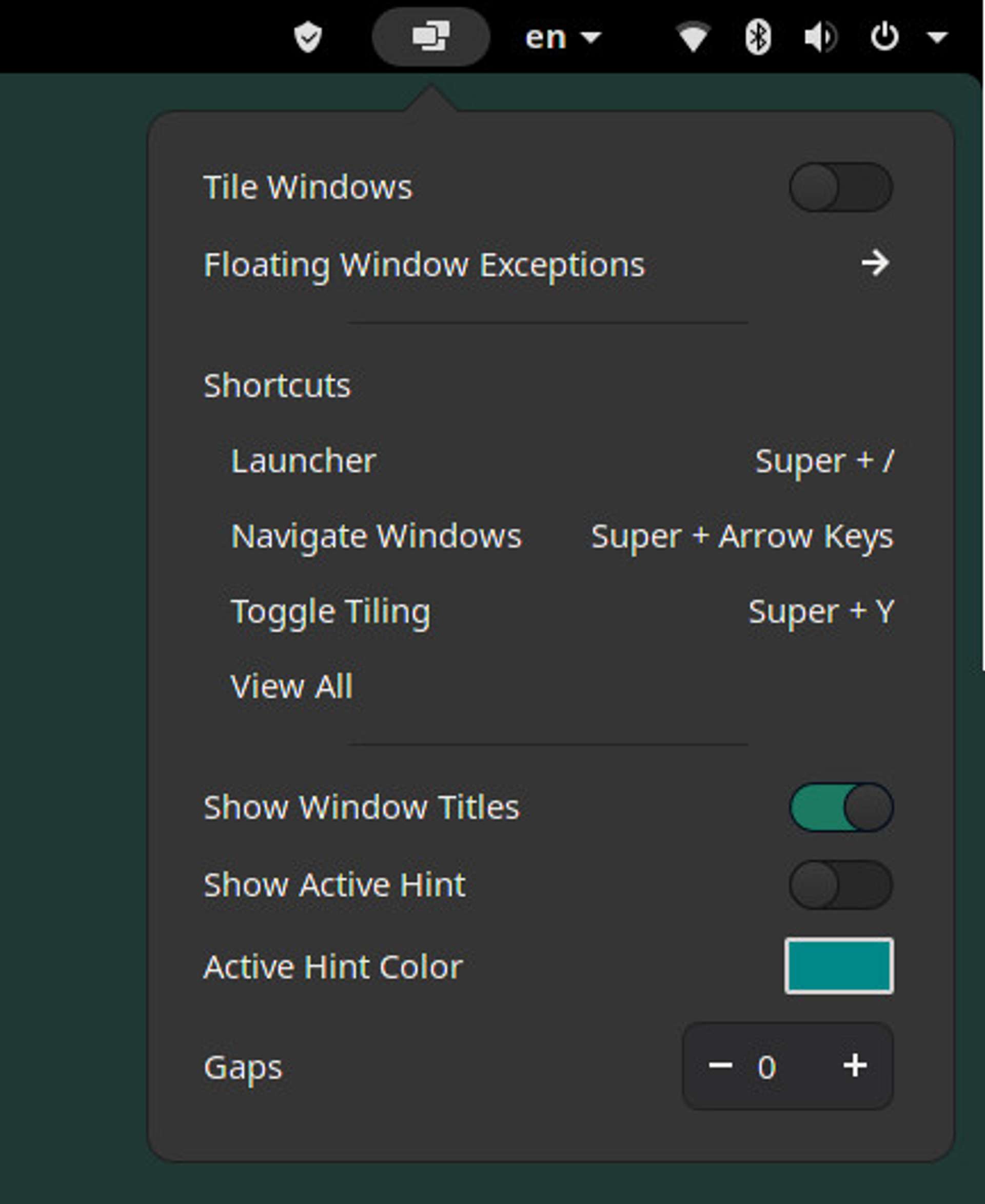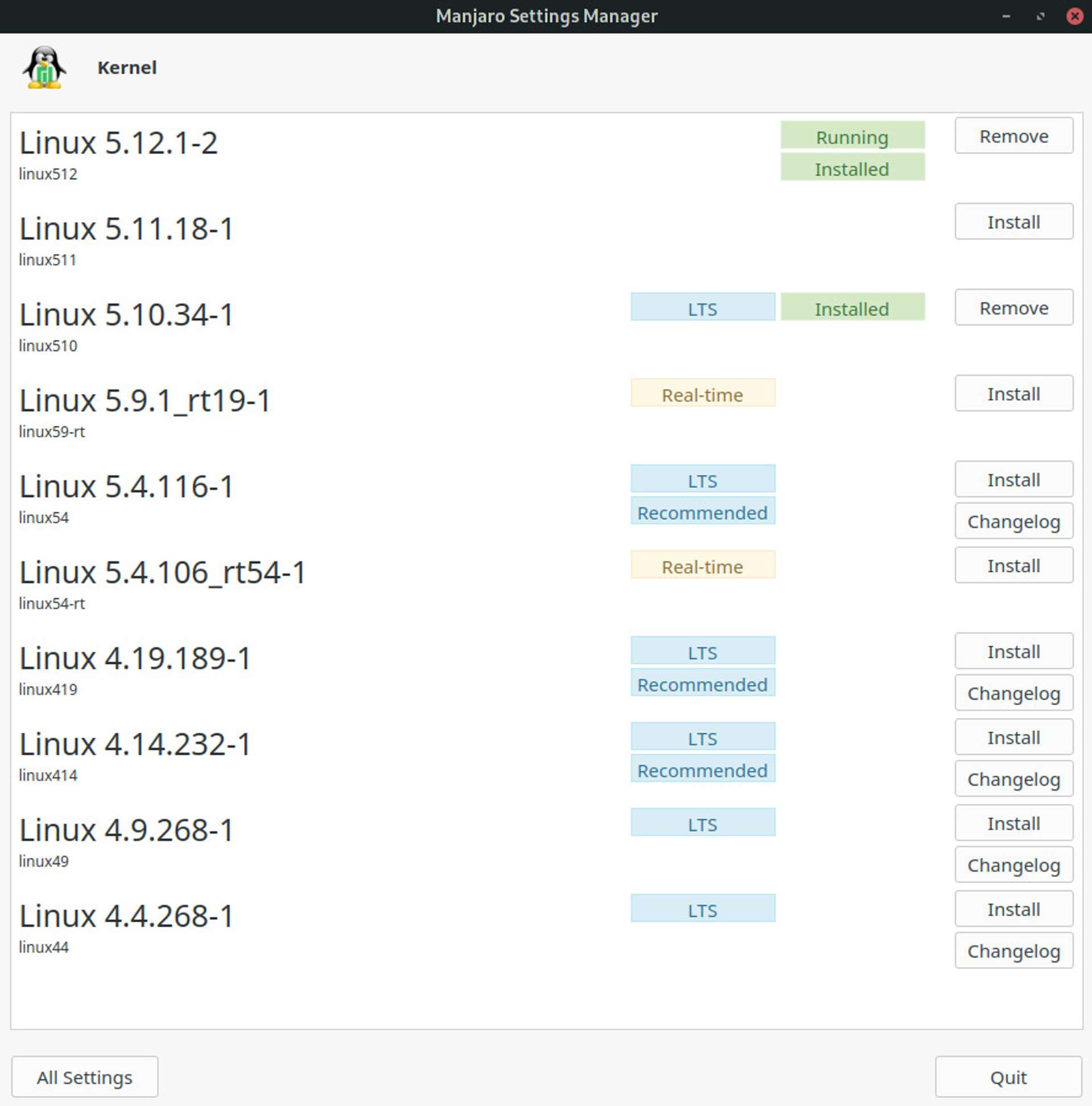This article is not to convince Windows users to switch, although for some it may be beneficial. It is to detail why I decided on Manjaro over the long list of other Linux distributions that are available.
I have used other systems such as Ubuntu and Fedora for years, so have a reasonable view of what is going on elsewhere. So if you think another Linux users opinion may be interesting, maybe read on...
What previous Linux distros have you used? #
I have been using Linux as my main and only OS for quite a few years now. I started off using Ubuntu, which I suspect a lot of people do. I still believe Ubuntu is probably the best starting point for someone new to Linux. Mainly because of the large community, and hence guidance, available online.
When I got my first itch to try something different I ended up settling on Fedora (which I think was at about release 26 at the time). I then stuck with Fedora right up until switching to Manjaro at the start of this year (2021).
I should also note that over all of that time my server has been running on Ubuntu. The option of 'fully up to date' or Long Term Support (LTS) versions is one of the great attributes that Ubuntu has available.
Have you used any other distributions over that time #
The amount of distributions Linux has available could be seen as a curse, and I am sure it is a bit overwhelming for newcomers. However, I have generally found it to be of great use in various situations. These are the distributions I currently use:
Zorin OS #
I chose Zorin OS xfce install to replace Chrome OS on my, now dated, Acer C720P chromebook. This was mainly because I was no longer receiving security updates from ChromeOS.
The main problem I had is that it has non-upgradeable RAM, and there is only 2GB available on my particular model. This seriously limits your options.
I basically wanted something that looked nice, and ran smoothly. With the limited power and RAM. Zorin OS xfce met these requirements perfectly.
Raspberry Pi (Raspbian) #
I needed to produce something that was cheap but fully functional, and that could integrate with existing windows systems.
Raspian, or more the cheapness of Raspberry Pi, fit the bill here perfectly.
Tails #
I always have a tails install on one of my USB drives.
If you need some temporary security while out and about, Tails is perfect.
Others #
I have also at various points in time used the following:
- Qubes (A great security focused OS)
- Pop OS (Probably the best ubuntu based OS out there)
- Kali (Designed for penetration testing)
There may be more that I can't remember.
Considering all the distros I have tried, I haven't even really scratched the surface. There are many more!
Why did you consider Manjaro over all the other distros? #
Rolling updates #
One of the main reasons that I initially decided to look into Manjaro is that I heard it has a 'rolling' update method of releasing updates.
What exactly are 'rolling' updates #
What this basically means is that the OS is updated continuously as updates for various programs and packages are released by their maintainers. This differs from other large distros such as Ubuntu or Fedora which have major updates approximately every 6 months.
It is nice to see the shiny new features after a major upgrade, but this is often tarnished by the fiddling about that is required afterwards.
The problem withmajor updates every 6 months is that, more often than not, something will break. These days the operatings system itself will update perfectly. However, every time I have done a major update there is a program or system utility that will need fixing or readjusting to work as it did before the update ran.
It is nice to see the shiny new features after a major upgrade, but this is often tarnished by the fiddling about that is required afterwards.
You don't have any of this pain with Manjaro.
The advantages of rolling updates #
You may argue that things can go wrong with rolling updates, and yes they can. I haven't experienced it yet, but I have no doubt my day will come!
The difference is, that with rolling updates you have far less to deal with. Trying to pin point the source of a problem after a major 6 month upgrade affecting hundreds, maybe thousands of packages is a nightmare. The smaller 'upgrade' of rolling releases are much more managable.
It is based on Arch Linux #
This more intrigued me than anything else. Arch linux has a reputation, and a good one at that.
Think about the type of person you need to be to run Arch. You need to be really into your system to want to spend the time it takes to basically build your operating system from scratch. And that's what Arch is, ultimate flexibility.
...but this has a side effect. The people involved in the community are likely to be very knowledgable. This is basically proven by the existence of the Arch Wiki and Arch User Repository (AUR).
Even if you don't use Arch Linux, the arch wiki is an insanely good source of information to troubleshoot all sorts of problems!
If you like the idea of Arch, why not just use Arch? #
This is where it comes down to personal preference.
I could go the whole hog, but the reality is I don't want to. I have no desire to build my system from scratch, because to be honest when I started looking into Manjaro it seemed to be well thought out, and pretty flexible if you want it to be. I suspect I would struggle to beat it with my own build!
I have no desire to build my system from scratch
There is also an added element of stability. The Manjaro developers test updates released for Arch for stability etc. before they are made available in Manjaro. I think this is a very good idea.
Yes, you sacrafice some cutting-edge-ness, but for me at least, the amount I lose is very small, and irrelevant. I much prefer the added stability.
So you like Manjaro, what made you stick with it? #
Suprisingly quite a lot. I really liked using Fedora, and did for many years, but Manjaro fits me like a glove. It really is an excellent distro.
Many install options #
People have different tastes when it comes to desktop GUI environments. As main 'official' options you have:
- GNOME
- KDE Plasma
- Xfce
In general I would say that covers most people. Not a bad start!
Don't like those? Well you can also get the following community editions, easily downloadable from the official website:
- Budgie
- Cinnamon
- i3
- MATE
- Sway
Have an ARM device. No worries! There are loads of options for that too. Even the Rasperry Pi 4!
Further install flexibility if you want it #
The previous section should satisfy most people, and the install is a breeze. But what if you didn't like one of the options chosen for you in the install?
I had this problem. I wanted to use Btrfs as the disk filesystem, not ext4 which is standard.
When I originally installed Manjaro at the start of this year there was an 'Architect' version available that allowed a much more fine tuned install process, especially in terms of partitioning, swap, file system etc.
I have noticed that currently this option seems to have disappeared from the official website, but it was possible to boot into the architect installer from any ISO (which is what I did), so hopefully this option remains for the added flexibility that some people will want.
If you don't have any specific additional requirements (and you will know if you have) then the standard installs are sufficient, and really easy to deal with.
Package management #
In previous distros I have tended to do all package updating on the command line. This was mainly because I found it easier and more informative. I have also never really been very impressed with the GUI package managers of either Ubuntu or Fedora, in my case in Gnome.
Installing third party packages on either Fedora or Ubuntu (think PPAs if you are familiar with Ubuntu), always ends up being quite messy. It is something that I have put up with, as I didn't see another way, but the truth is I found it quite annoying.
Installing third party packages on either Fedora or Ubuntu (think PPAs if you are familiar with Ubuntu), always ends up being quite messy.
I think the package management, and the tools and methods used in Manjaro, is one of the major things that make it a pleasure to use. If you really think about it, you interact with package managers on a day to day basis. They need to work well.
There are three items that make it work smoothly:
- Pacman (the base package manager)
- Pamac (the GUI package manager)
- Arch User Repository (AUR)
...and unusually, it is the GUI package manager that is the stand-out item in this list. It is the only time I have started to favour the GUI package over the command line.
To understand why it works well, you first need to understand what the AUR is. It is essentially a repository that contains user made packages, a bit like PPAs in Ubuntu. So any packages that you don't have access to from the main Manjaro repo, you can get from the AUR (if it exists). If not, you are free to contribute yourself, and as always there are extensive instructions in the Arch wiki to help you do just that.
As you move forward, you don't end up with a fragmented mess.
The clever part is that Pamac keeps track of both normal Manjaro packages and AUR packages, and they are labelled clearly as such. You can install and uninstall either in exactly the same way - with the click of a button!
Some of the credit for this simple setup needs to be given to the AUR itself, which by nature ensures a consistent way of packaging the files. This means that any dependencies are taken care of as well, so you don't have to go fiddling around in config files, or installing additional items manually. As you move forward, you don't end up with a fragmented mess.
The base installs are aesthetically pleasing #
First and foremost the default settings for a desktop environment are really nice in terms of aesthetics. I use GNOME as my desktop, so it is a little difficult to comment of the other spins (KDE and xfce), but I have briefly installed the xfce version, and I would say it is probably the most aesthetically pleasing xfce I have ever seen (with the exception of Zorin OS xfce, maybe).
The above is subjective obviously, and of course you could customise it, as you could on any other GNOME desktop. However, out of the box I prefer the base GNOME setup to any other I have seen.
Desktop layout is highly configurable #
More inportant than the above, and another main reason for switching, is the flexibility they have made available out of the box. In this case I am talking about how you like to configure your desktop.
In the image above you can see the various options.
- Manjaro - a slightly tweaked traditional Gnome layout (uses dash-to-dock for example)
- Traditional - as close to Windows as you can get
- Unity
- Modern - think MacOS layout
- Gnome - the bog standard Gnome layout
- Tiling - an auto tiling desktop
You can switch between any of the above with ease and try out which one you like. This means that if you are not a massive fan of the traditional Gnome layout then you can get things how you like them without installing additional 3rd party packages.
As for me, I went with the Manjaro layout, but moved the dash-to-dock bar down to the bottom rather than the left edge. I never understood the left edge layout, as all your icons end up squashed.
The layout switcher also has a settings tab that gives you quick access to things like gnome tweak tool and gnome extensions, as well as some additional features such as auto dark theme and window tiling.
Pop-shell window tiling #
You may have spotted in the previous section that the settings section of the layout switcher has an item called "Window Tiling (Pop-shell)".
This, in my opinion is a really excellent addition. Pop shell is essentially a window tiling system developed by System76 for PopOS.
If this feature is turned on you then have access to Pop-shell within Manjaro! The way it is integrated is by the addition of a simple icon in the top bar.
This allows you to quickly and easily have an easy to use window tiling system when it suits the situation, and then turn it off when you don't need it. All integrated perfectly and easy to use.
Change your kernel on demand #
Not something that I specifically use, but is noteworthy, is that Manjaro has within it's GUI settings manager a kernel manager.
This means you can easily switch kernel at a moments notice. I imagine some people will find this quite useful.
Conclusion #
All in all Manjaro is really well rounded OS.
- plenty of features to allow you to easily set up the OS the way you want it,
- solid and well thought out packageing system and software so you don't end up with an unkempt mess after a few months of use.
- no major updates to contend with every six months
- looks pretty good out of the box
I recommend you give it a try.
🙏🙏🙏
Since you've made it this far, sharing this article on your favorite social media network would be highly appreciated. For feedback, please ping me on Twitter.
...or if you want fuel my next article, you could always:
Published
